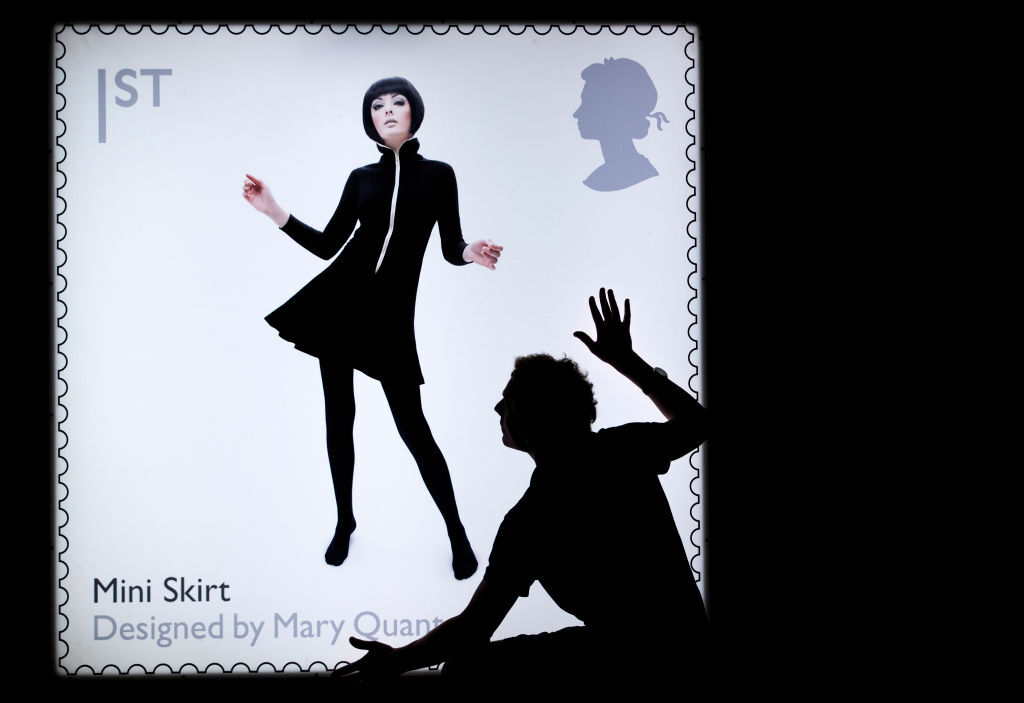Mary Quant, the designer credited with creating the look of England’s Swinging ‘60s, died on April 13 at age 93. Quant defined the fashion of the era, popularizing hotpants, knee-high socks, berets, and, most famously, was credited with inventing the miniskirt.
But others have suggested that while Quant—or the others who may have created it—may have done the designing, it was really the invisible hand of the market that raised skirt hemlines in the 1960s. That’s the idea proposed by the “hemline index,” an economic theory suggesting that hemlines rise and fall with economic fortunes. Economic booms lead to good times and short skirts; recessions bring austerity, both in budgets and fashion.
So should economics departments start teaching students about hip lines as well as assembly lines?
The theory actually predates the introduction of miniskirts and came in the 1920s, when economist George Taylor noted that skirts getting shorter led to increased hosiery sales. Flappers’ skirts getting shorter in the 1920s, countercultural miniskirts in the 1960s, and the weird denim skirt phase of the 2000s are often cited as examples of the phenomenon in action. The following decades and their economic decline, were also met with a lengthening of skirts, the narrative goes.
But it may not be so simple.
“I’ll put it this way,” said Scott Lincicome, vice president of general economics at the Cato Institute and a Dispatch contributor. “There’s a wonderful website called Spurious Correlations that looks at hilarious relationships between two variables that obviously don’t have much to do with each other. And this strikes me as unlikely.”
“It’s important to remember fashion trends can be years in the making, and designers are typically working a year in advance before release,” Drexel University fashion program director Lisa Hayes told The Dispatch.
“I think that although there might not be an exact science as far as a hemline index, there certainly is a strong effect of styles and hemlines reflecting the mood of the public,” she said. “The skirts had already been getting shorter in the early ‘50s following the end of World War II. In the ‘60s, skirts appeared to be around knee-length. It was from there that Mary Quant, in response to the girls who would come into her shop, designed shorter and shorter skirts.”
While the hemline index is outdated, other consumer behavior does provide insight into the state of the economy, according to Sean Snaith, director of the University of Central Florida’s Institute for Economic Forecasting.
“We’re seeing consumers change their behavior as they’re facing high rents, high electricity costs, still pretty rapid pace of food inflation, all those big items,” Snaith said.
Credit card debt, for example, is up as consumers have relied more on credit as their cash doesn’t go quite as far. “Buy now, pay later” credit options for purchases have increased in popularity. Consumers are tightening the belt and avoiding major purchases and discretionary purchases in general.
And those indicators suggest we’re headed toward what Snaith called a “pasta bowl recession.”
“The sides are tapered gently, and so we’re sort of entering into these recessions and exiting them without a lot of fireworks,” he said.
Some of the traditional signifiers of recessions have hit the American economy—two consecutive quarters of negative GDP growth and rocketing inflation rates. But the unemployment rate is near a 54-year low at 3.5 percent, and wage growth is continuing at a near 25-year high.
“Even now, if you’re a less educated worker, you can find a job tomorrow and it will pay better than anything you’ve probably seen in your lifetime,” said Lincicome. But even with a relatively robust job market, inflation is driving up costs and consumers are feeling it.
“There’s no reason to feel great about the U.S. economy, but there’s really no sign that we’re about to have some sort of terrible collapse,” said Lincicome. “It continues to be this just kind of an annoying mishmash.”
Will we see a recession? “It looks like it’s a 50/50 thing,” Lincicome said. “My view, looking at the latest data is that a soft landing of sorts is still very much possible, but that doesn’t mean that there won’t be pain.”
Snaith and Lincicome’s predictions align broadly with a survey of economists performed by the National Association for Business Economics at the start of 2023 that found most economists expect an economic slump later in 2023. Fashion experts, meanwhile, anticipate micro-miniskirts will be in this spring and summer.
But Hayes warns against premature optimism: “Early reports in January 2023 told us skirts will be a driver this year, and by February 2023 told us it’s time we get ready for this big maxi/midi length trend that looks to peak in fall of 2023.”







Please note that we at The Dispatch hold ourselves, our work, and our commenters to a higher standard than other places on the internet. We welcome comments that foster genuine debate or discussion—including comments critical of us or our work—but responses that include ad hominem attacks on fellow Dispatch members or are intended to stoke fear and anger may be moderated.
With your membership, you only have the ability to comment on The Morning Dispatch articles. Consider upgrading to join the conversation everywhere.